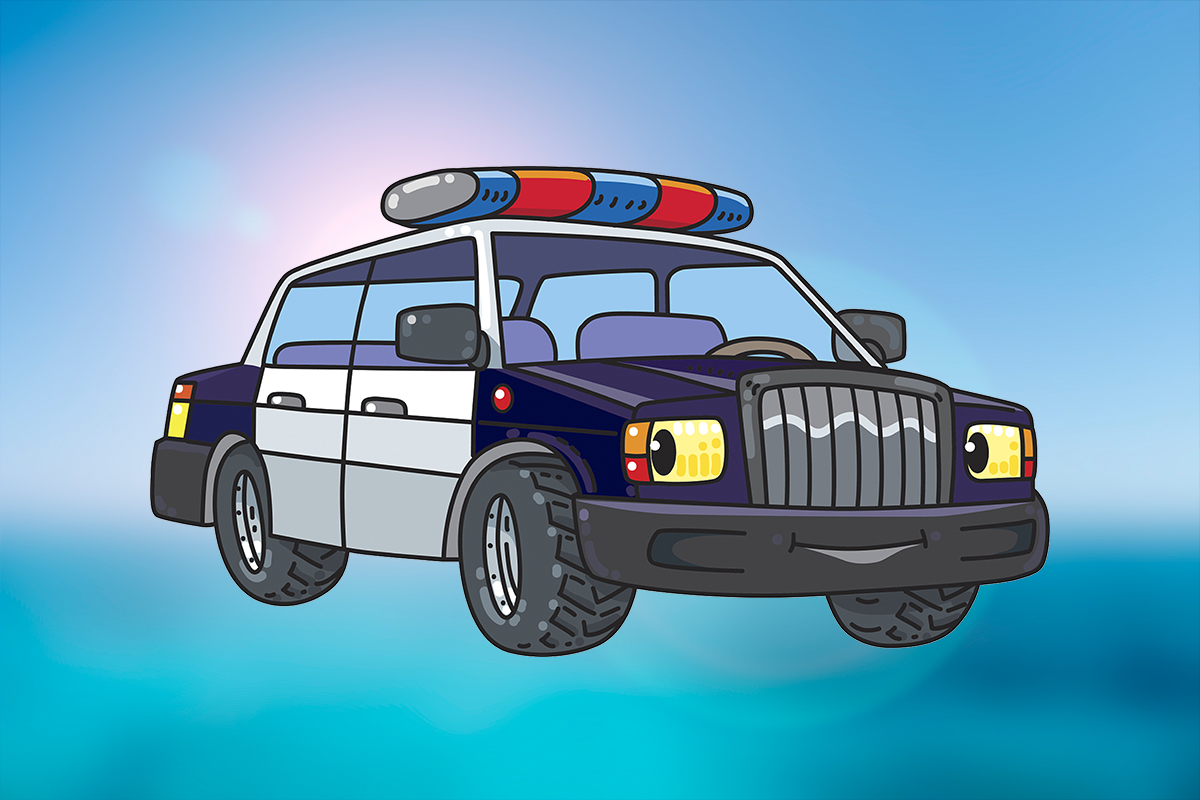
Emergency vehicle lights are specialized lighting systems installed on vehicles used by emergency services, such as police cars, fire trucks, ambulances and other response vehicles, to enhance visibility, alert other road users, and signify the urgency of the vehicle's mission. Emergency vehicle lights are designed to be highly visible, even from a distance. They use intense and bright lighting to grab attention and alert others to the presence of an emergency vehicle. The distinctive colors and flashing patterns of emergency lights convey a sense of urgency. The combination of bright colors, such as red, blue, or white, along with dynamic flashing or strobing patterns, signals that the vehicle is responding to an emergency. The combination of lighting and audible signals creates a comprehensive system that prioritizes safety during critical situations. The use of emergency vehicle lights is regulated by traffic laws to ensure safe and responsible use. Emergency responders are granted certain privileges, such as exemptions from certain traffic regulations, to facilitate their rapid response to emergencies.
Emergency vehicle lighting is utilized on various types of vehicles employed by emergency services to enhance visibility, signal urgency, and alert other road users. Law enforcement vehicles, including patrol cars and specialized units, use emergency lights to signal their presence, indicate pursuit, and manage traffic during emergencies or law enforcement operations. Ambulances are equipped with emergency lights to quickly navigate through traffic, communicate their urgent status, and ensure a clear path to reach medical emergencies. The lights on ambulances often include red and white colors. Fire trucks use emergency lights to alert other drivers and pedestrians to their presence on the road. These lights help fire departments respond rapidly to fire emergencies and other incidents requiring their intervention. Vehicles used for search and rescue operations, including those operated by search and rescue teams, often feature emergency lighting to enhance visibility during critical operations. Emergency medical service (EMS) vehicles, including paramedic units and other medical response vehicles, use emergency lights to signal their role in providing urgent medical care and transport. Vehicles transporting hazardous materials or participating in hazmat response teams may use emergency lights to alert others to the potential dangers and ensure safe passage through traffic. Some utility vehicles, such as those used by public works departments or utility companies, may be equipped with emergency lights for situations where their rapid response is necessary, such as power outages or road maintenance emergencies. Tow trucks may use emergency lights, especially when responding to roadside assistance calls, accidents, or when towing vehicles on the road. The lights enhance the visibility of the tow truck and signal potential hazards to other drivers. Vehicles used for private security purposes, including those patrolling private properties or events, may be equipped with emergency lights to signal their presence and authority. Some government vehicles, particularly those involved in emergency management, disaster response, or public safety initiatives, may be equipped with emergency lights for quick and efficient deployment during crises. Certain military vehicles, especially those involved in domestic operations such as disaster relief, may be equipped with emergency lighting to aid in coordination with civilian authorities. Various public service vehicles, including park rangers, animal control, and environmental agencies, may use emergency lights for specific situations where immediate response or visibility is essential.
Emergency vehicle lighting encompasses various aspects designed to enhance visibility, indicate urgency, and improve safety during emergency responses. Different colors are often associated with specific emergency services. For example, red is frequently used for firefighting, blue for law enforcement, and a combination of red and white for ambulances. Emergency lights often feature different flashing patterns to attract attention. These patterns may include steady lights, alternating flashes, strobes, or specific sequences. The variability in patterns helps create a distinctive and attention-grabbing display. Modern emergency lighting systems may have adjustable intensity levels. The ability to control the brightness of the lights allows emergency responders to adapt to different lighting conditions and optimize visibility without causing unnecessary glare. Directional lighting ensures that the emergency lights are visible from specific angles, aiding other motorists in understanding the intended path of the emergency vehicle. This feature is especially important for intersections and navigating through complex traffic scenarios. Synchronization of lights ensures that multiple emergency lights on the same vehicle operate in harmony. This creates a unified and coordinated visual display, improving the effectiveness of the warning signals. While not directly a part of the lighting system, emergency vehicles often feature audible warning devices, such as sirens, that complement the visual warnings provided by the lights. The features of emergency vehicle lighting can be customized based on the type of emergency vehicle. Law enforcement vehicles, ambulances, and fire trucks may have different lighting configurations to distinguish their roles.
Emergency vehicle lighting comes in various types, each designed to serve specific purposes in enhancing visibility, signaling urgency, and facilitating safe passage for emergency vehicles. Light bars are elongated, often roof-mounted, assemblies that house multiple light modules. They can emit a combination of steady, flashing, or rotating lights. Light bars are highly visible and are a signature feature on many emergency vehicles. Strobe lights use a xenon flash tube to produce bright, brief flashes of light. They are known for their intense illumination and are commonly used in emergency vehicle light setups. Strobe lights are effective in capturing attention due to their rapid and powerful flashes. Rotating beacons consist of a rotating light source that produces a flashing effect. While less common today, they were historically used on emergency vehicles. Modern light bars and strobe lights have largely replaced rotating beacons. Grille lights are compact light modules installed in the front grille of a vehicle. They contribute to the forward-facing visibility of the emergency vehicle. Grille lights are often equipped with LEDs for their efficiency and brightness. Surface-mounted lights are compact units that can be affixed to various parts of the vehicle's exterior. They are versatile and can be installed on the roof, sides, or rear of the vehicle. Hideaway lights are designed to be discreet when not in use. They are often installed inside the vehicle's headlights, taillights, or other existing openings. When activated, they pop up or become visible to provide emergency lighting. Wig-wag lights alternately flash the vehicle's headlights or taillights, creating a distinctive and attention-grabbing effect. This alternating pattern enhances visibility and is commonly used by law enforcement. Directional lights are designed to emit light in specific directions. They can be configured to indicate turns, lane changes, or the general movement of the emergency vehicle, aiding other drivers in understanding its path. Scene lights are designed to illuminate the area around the emergency vehicle. They are often used by fire trucks and rescue vehicles to provide additional lighting at incident scenes, enhancing the safety of responders and the public.
LED technology brings emergency vehicle lighting to new heights by revolutionizing the efficiency, design possibilities, and overall performance of these critical safety systems. LED lights are highly energy-efficient, converting a large percentage of electrical power into visible light. This efficiency allows emergency vehicles to have bright and intense illumination without putting excessive strain on the vehicle's electrical system. LEDs are compact and lightweight, allowing for flexible and versatile designs in emergency vehicle lighting systems. This is particularly advantageous for integrating lights into various parts of the vehicle, such as light bars, grille lights, and surface-mounted lights. LEDs are known for their durability and longevity. They have a longer operational lifespan compared to traditional lighting sources like incandescent bulbs. This durability is especially important for emergency vehicles that may encounter demanding conditions and require reliable lighting over extended periods. LED lights produce bright and intense illumination, ensuring high visibility even in challenging conditions such as adverse weather, heavy traffic, or low light. The superior brightness of LEDs enhances the effectiveness of emergency vehicle lights in capturing the attention of other road users and signaling urgency. LED lights achieve full brightness instantly when activated, providing a rapid response. This quick response time is crucial during emergency situations where immediate deployment of warning signals is essential to alert other drivers and pedestrians. LED technology allows for the programming of various lighting patterns and functions. Emergency lights can be configured to display steady lights, flashing patterns, directional signals, and dynamic displays. This multi-functionality enhances the visual impact of emergency signals, aiding communication and situational awareness. LED lights offer a wide range of color options, allowing for customization based on the specific requirements of different emergency services. Whether it's red for firefighting, blue for law enforcement, or a combination of colors for specific situations, LED technology provides flexibility in meeting regulatory and operational needs. LED emergency lights can be seamlessly integrated with sophisticated control systems. This integration allows for precise control of lighting patterns, synchronization with other vehicle systems, and adaptive responses based on the vehicle's operational state.
The design and construction of emergency vehicle lights involve careful planning to ensure optimal visibility, functionality, and compliance with regulations. The choice of the light source is a critical aspect of the design. LED technology is commonly preferred for its energy efficiency, brightness, and versatility. Other technologies may also be used based on specific requirements. Emergency vehicle lights are designed to emit specific colors, each associated with a particular emergency service. Flashing patterns, steady lights, wig-wag effects, and directional signals are programmed to create a dynamic and attention-grabbing display. The ability to switch between patterns enhances the adaptability of the lighting system. Optical elements, such as lenses and reflectors, are incorporated to control the direction and spread of light. Emergency vehicle lighting systems must withstand various environmental conditions. The construction involves materials that are weather-resistant and durable to ensure reliable performance in rain, snow, high temperatures, and other challenging situations. Advanced control systems are integrated into the design to provide precise control over the lighting system. These systems allow for the customization of lighting patterns, synchronization with other vehicle systems, and adaptive responses based on driving conditions. Emergency vehicle lighting may be integrated with other safety features, such as collision avoidance systems and backup cameras. This integration enhances overall safety and situational awareness during emergency responses.






















